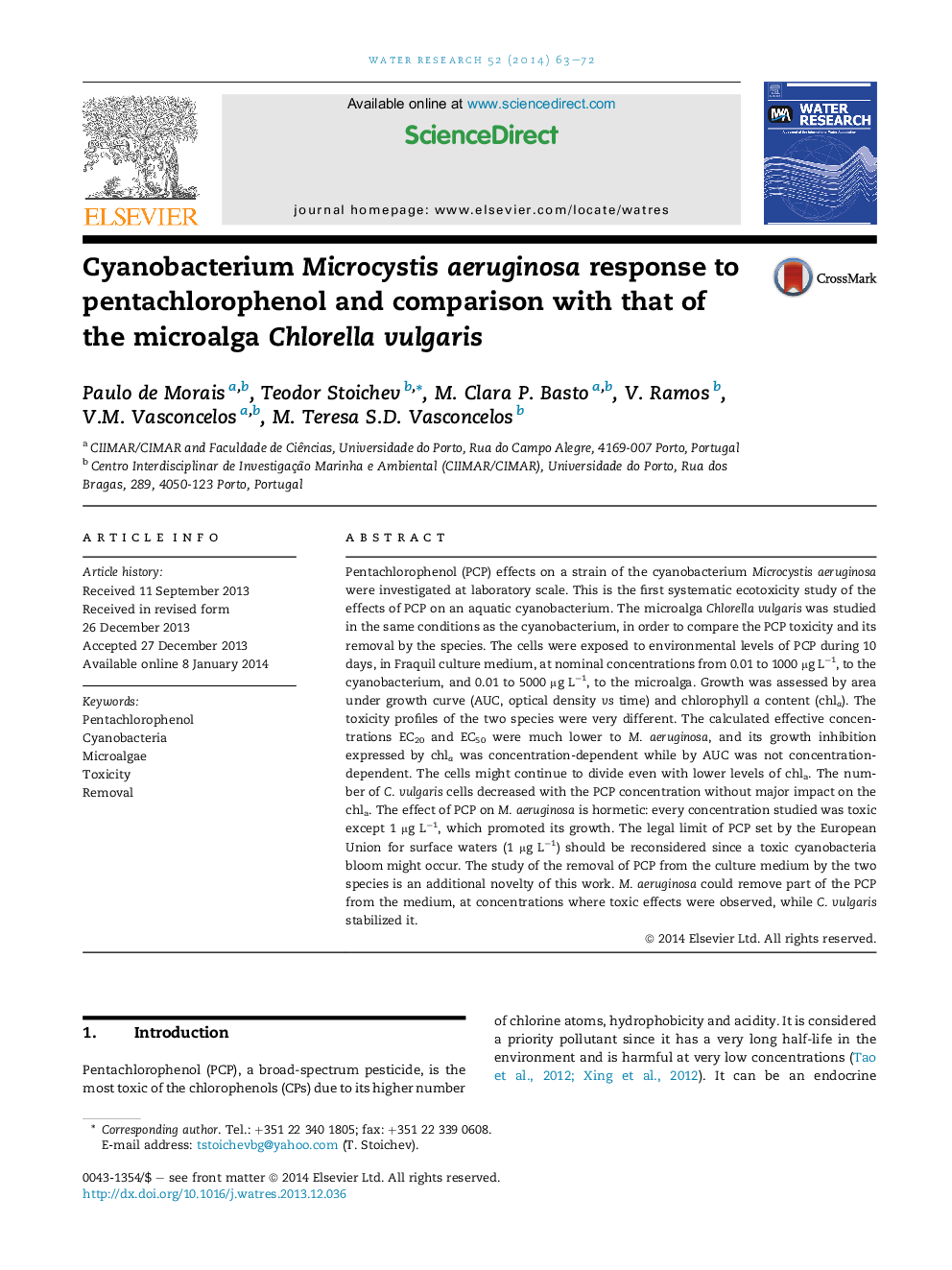| کد مقاله | کد نشریه | سال انتشار | مقاله انگلیسی | نسخه تمام متن |
|---|---|---|---|---|
| 4481663 | 1623116 | 2014 | 10 صفحه PDF | دانلود رایگان |

• The first ecotoxicity study of pentachlorophenol (PCP) on Microcystis aeruginosa.
• The PCP effects on M. aeruginosa can be considered hormetic.
• M. aeruginosa exposed to PCP kept on growing even with lower levels of chlorophyll a.
• The PCP toxicity profile of Chlorella vulgaris differs from that of M. aeruginosa.
• M. aeruginosa could remove part of the PCP while C. vulgaris stabilized it.
Pentachlorophenol (PCP) effects on a strain of the cyanobacterium Microcystis aeruginosa were investigated at laboratory scale. This is the first systematic ecotoxicity study of the effects of PCP on an aquatic cyanobacterium. The microalga Chlorella vulgaris was studied in the same conditions as the cyanobacterium, in order to compare the PCP toxicity and its removal by the species. The cells were exposed to environmental levels of PCP during 10 days, in Fraquil culture medium, at nominal concentrations from 0.01 to 1000 μg L−1, to the cyanobacterium, and 0.01 to 5000 μg L−1, to the microalga. Growth was assessed by area under growth curve (AUC, optical density vs time) and chlorophyll a content (chla). The toxicity profiles of the two species were very different. The calculated effective concentrations EC20 and EC50 were much lower to M. aeruginosa, and its growth inhibition expressed by chla was concentration-dependent while by AUC was not concentration-dependent. The cells might continue to divide even with lower levels of chla. The number of C. vulgaris cells decreased with the PCP concentration without major impact on the chla. The effect of PCP on M. aeruginosa is hormetic: every concentration studied was toxic except 1 μg L−1, which promoted its growth. The legal limit of PCP set by the European Union for surface waters (1 μg L−1) should be reconsidered since a toxic cyanobacteria bloom might occur. The study of the removal of PCP from the culture medium by the two species is an additional novelty of this work. M. aeruginosa could remove part of the PCP from the medium, at concentrations where toxic effects were observed, while C. vulgaris stabilized it.
Figure optionsDownload high-quality image (171 K)Download as PowerPoint slide
Journal: Water Research - Volume 52, 1 April 2014, Pages 63–72